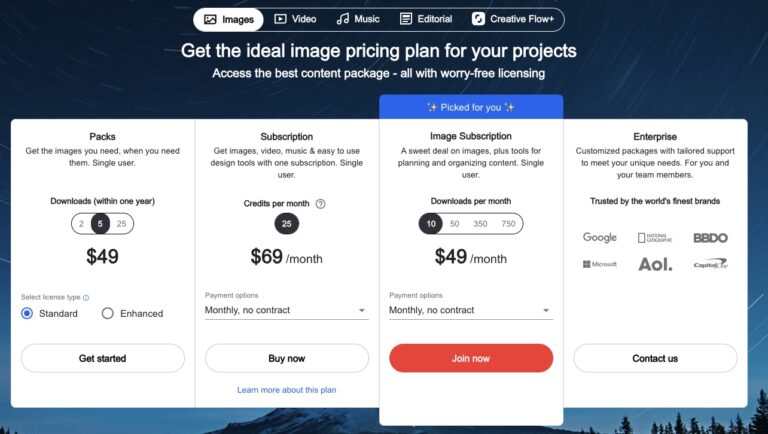If you’re new to Shutterstock, it’s exciting but can also feel a bit overwhelming trying to understand how everything works. Shutterstock is one of the largest stock photo platforms out there, and it connects photographers, illustrators, and designers with millions of potential buyers worldwide. The process starts with submitting your high-quality images or videos to their marketplace, where they go through a review process before becoming available for sale.
The submission process is straightforward but requires attention to detail. You upload your files along with relevant keywords, titles, and descriptions to help buyers find your work. Once submitted, your content enters a review queue, where Shutterstock’s team checks for quality, originality, and adherence to their guidelines. This review typically takes anywhere from a few days up to a week, though it can be longer during busy periods.
After approval, your assets are live on the platform, and you start earning royalties whenever someone downloads your work. It’s important to note that Shutterstock has strict quality standards—images must be sharp, well-composed, and free of distractions. Also, the more diverse and relevant your portfolio, the better your chances of making sales. So, understanding the submission process and expectations can give you a head start on your journey to earning your first dollar.
Factors That Influence the Timeframe for Your First Sale

Getting your first sale on Shutterstock is an exciting milestone, but how long it takes can vary widely. Several factors influence this timeframe, and understanding them can help you set realistic expectations and improve your chances of success.
1. Quality of Your Portfolio
High-quality, professional-looking images are more likely to attract buyers. Sharp, well-lit, and properly composed photos, along with relevant keywords, help your work stand out. If your portfolio is diverse and includes popular themes—like business, technology, nature, or lifestyle—you’ll attract more interest.
2. Keywording and Metadata
Accurate and strategic keywords are crucial. Think about what buyers might search for and include a mix of broad and specific terms. Well-optimized metadata can significantly increase your visibility in search results, leading to more downloads and quicker sales.
3. Niche and Market Demand
Some niches are more competitive, while others have higher demand. For example, images related to current trends, seasonal themes, or evergreen topics tend to sell faster. Research trending keywords and popular categories on Shutterstock to align your uploads accordingly.
4. Upload Frequency and Portfolio Size
The more quality content you upload, the higher your chances of making sales. Consistent uploads also help build your presence on the platform. Some contributors see their first sale within weeks, while others need several months of active uploading to start earning.
5. Promotion and Engagement
While Shutterstock primarily relies on search and algorithmic discovery, sharing your portfolio on social media or niche communities can boost visibility. Engaging with the platform’s community and staying active can sometimes accelerate your first sale.
Ultimately, patience and persistence are key. Every contributor’s journey is different, but focusing on quality, relevance, and consistency will give you the best shot at making that first sale sooner rather than later.
Tips to Accelerate Your First Sale on Shutterstock

Getting that first sale on Shutterstock can feel like a big milestone, but the good news is, there are several strategies you can use to speed up the process. Let’s dive into some practical tips that can help you get your images in front of buyers faster and increase your chances of making that first sale.
Optimize Your Uploads for Search
Shutterstock relies heavily on keywords and metadata to connect your images with potential buyers. Think about what someone might search for when looking for an image like yours. Use descriptive, relevant keywords, and be thorough. Don’t just stick to obvious terms—consider synonyms, related concepts, and even popular search trends.
- Use all 50 available keyword slots
- Include both broad and specific keywords
- Avoid spammy or irrelevant tags
Focus on Popular and Timely Topics
Images related to current trends, seasons, holidays, or popular themes tend to sell faster. For example, during the holiday season, festive images are in high demand. Keep an eye on trending topics and update your portfolio accordingly.
Maintain Consistency and Quality
Uploading consistently not only helps you build a diverse portfolio but also signals activity to Shutterstock’s algorithm, which can boost your visibility. Ensure your images meet quality standards—sharp, well-lit, and properly edited. High-quality images are more likely to be approved and purchased.
Engage with the Shutterstock Community
Participate in forums, follow other contributors, and learn from their experiences. Sometimes, advice from seasoned contributors can offer insights into what’s selling well and how to improve your submissions.
Promote Your Portfolio
Share your Shutterstock profile on social media, your website, or blogs. While Shutterstock traffic mainly comes through their platform, a little external promotion can lead to early exposure and sales.
Remember, patience is key. Combining these tips with perseverance will help you move closer to your first sale faster than just waiting around. Keep experimenting, learning, and refining your approach!
Common Challenges New Contributors Face and How to Overcome Them

Starting out on Shutterstock can be exciting, but it’s not without its hurdles. Many new contributors encounter similar challenges. Recognizing these early can help you develop strategies to overcome them and set yourself up for success.
Challenge 1: Long Wait for Approvals
It’s normal for new uploads to go through an approval process that can take a few days. During this time, you might feel anxious about whether your images will be accepted. To ease this, always review Shutterstock’s submission guidelines carefully before uploading. Ensure your images are well-edited, properly tagged, and meet technical standards. This increases the likelihood of quick approvals.
Challenge 2: Low Visibility and Limited Sales
In the beginning, your images might not get much attention. This can be discouraging, but it’s important to stay consistent. Keep uploading high-quality images regularly, optimize your keywords, and engage with the community. Over time, your portfolio will grow, and your visibility will improve.
Challenge 3: Competition from Established Contributors
Shutterstock has many talented photographers and designers. Standing out can be tough. Focus on niche topics or unique styles that aren’t overly saturated. Providing fresh, original content can help you carve out your space and attract buyers looking for something different.
Challenge 4: Staying Motivated and Avoiding Burnout
Uploading and waiting for sales can be slow, which might lead to frustration. To stay motivated, set small goals—like uploading a certain number of images each week—and celebrate each milestone. Remember, success often comes from persistence and continuous learning.
How to Overcome These Challenges:
| Challenge | Solution |
|---|---|
| Approval delays | Follow guidelines precisely and improve image quality |
| Limited visibility | Consistently upload, optimize keywords, and promote externally |
| High competition | Find niches, create unique content, and differentiate your style |
| Motivation dips | Set achievable goals, track progress, and stay inspired by other creators |
Remember, every successful contributor started somewhere. Facing and overcoming these common challenges is part of the journey. Keep learning, stay persistent, and soon enough, you’ll find your rhythm and start making those sales!
Tracking Your Progress and Measuring Success on Shutterstock
So, you’ve just uploaded your first batch of images or videos to Shutterstock — congrats! But now the big question is: how do you know you’re heading in the right direction? That’s where tracking your progress and measuring success come into play. It’s super important not just to see how many sales you make, but to understand what’s working and what might need a tweak.
Shutterstock provides some handy tools to help you keep an eye on your performance. The Contributor Dashboard is your go-to spot. Here, you can see:
- Total downloads: How many of your assets have been downloaded.
- Revenue earned: How much money you’ve made so far.
- Top-performing assets: Which images or videos are getting the most attention.
- Download trends over time: Are your sales increasing, plateauing, or dipping?
It’s a good idea to check your dashboard regularly — weekly or bi-weekly works for most contributors. This helps you spot patterns, like which types of images sell best or which keywords are driving traffic. For example, if you notice that your nature photos are consistently downloaded more than your cityscapes, you might want to focus more on nature in your next uploads.
Another helpful step is to analyze your keyword performance. Are your images showing up in search results? Are potential buyers finding your work? You can experiment with different keywords or descriptions to improve visibility. Don’t forget, Shutterstock also offers some insights on how your images perform in search, so pay attention to those.
Lastly, consider setting personal goals. Maybe you aim to make your first $50, or reach a certain number of downloads within a month. Tracking these goals helps keep you motivated and gives you a clear measure of progress. Remember, success doesn’t happen overnight. Patience and consistent effort, combined with regular tracking, will help you stay on course.
Conclusion: Setting Realistic Expectations for New Shutterstock Contributors
Embarking on your Shutterstock journey is exciting, but it’s important to keep your expectations grounded. The truth is, making your first sale can take anywhere from a few days to several months — it all depends on the quality of your work, how well you optimize your assets, and a bit of luck.
Many new contributors are eager to see quick results, but it’s essential to remember that Shutterstock is a marketplace. Just like any other, it rewards consistency, quality, and understanding your audience. Think of your first sale as a milestone, not the finish line. Each upload, each tweak in your keywords, and each review of your analytics gets you closer to success.
Here are a few tips to help set realistic expectations:
- Growth takes time: Building a portfolio and reputation doesn’t happen overnight.
- Quality over quantity: Focus on creating high-quality, original content that stands out.
- Stay consistent: Regular uploads and engagement can boost your chances.
- Learn and adapt: Use your tracking insights to refine your approach.
Remember, every successful contributor started somewhere. Stay patient, keep learning, and celebrate each small victory along the way. With dedication and realistic expectations, you’ll find your footing on Shutterstock and, eventually, start seeing those sales roll in. Happy uploading!


